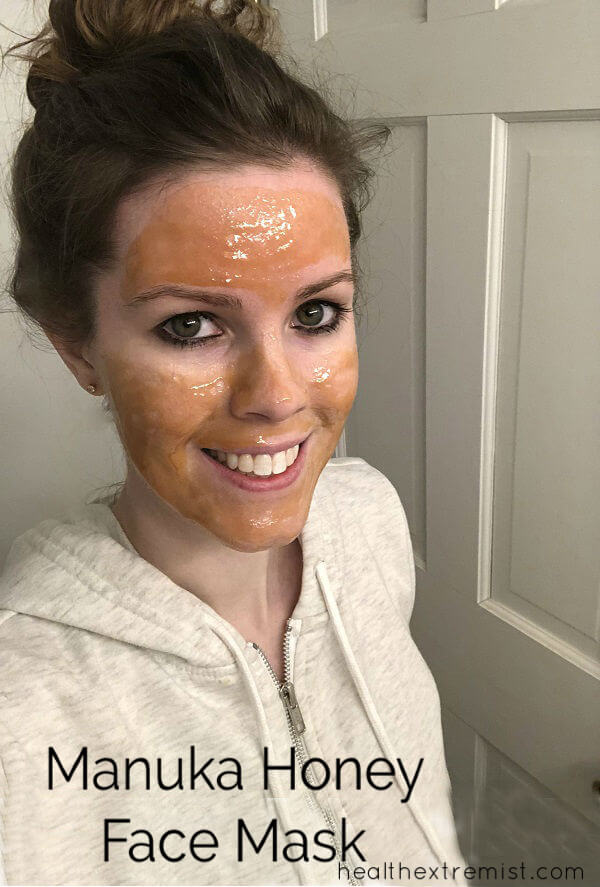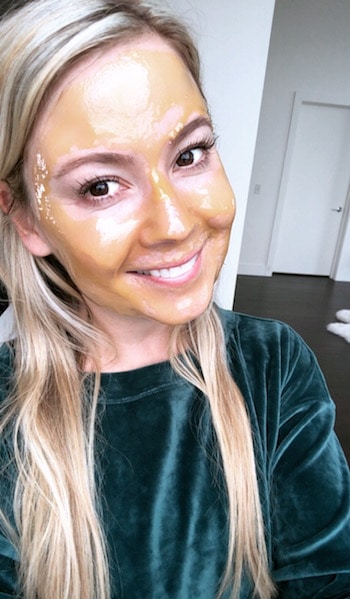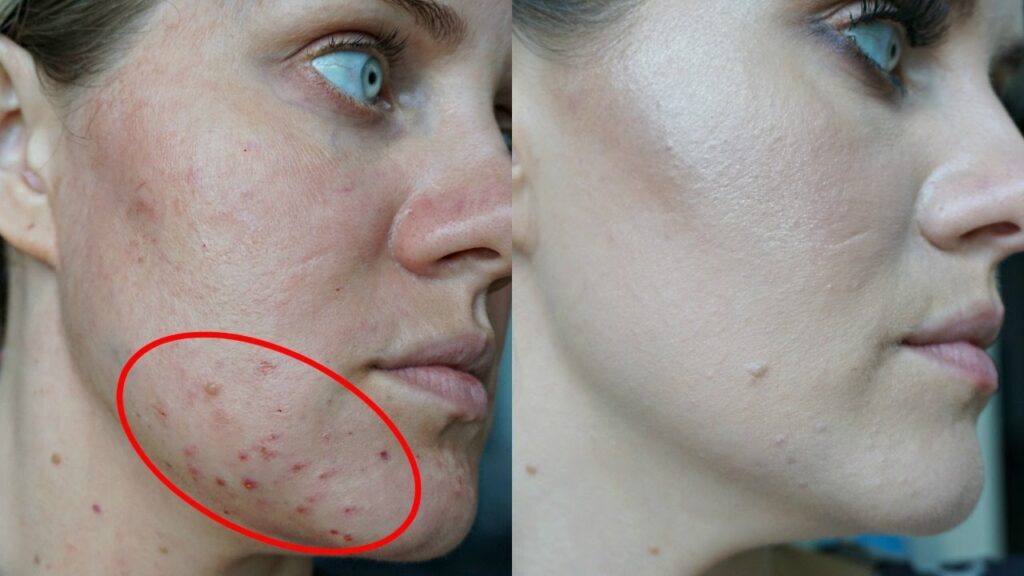
You’ve finally discovered the wonders of using Manuka honey on your face, but now you’re left wondering how long to leave it on. Look no further, as this article aims to provide you with the information you need to make the most of this natural remedy. Whether you’re looking to heal acne, reduce inflammation, or simply rejuvenate your skin, find out the optimal duration for leaving Manuka honey on your face to reap its countless benefits.

Benefits of Using Manuka Honey on Your Face
Why Manuka Honey is Good for Your Skin
Manuka honey is not just a sweet treat for your taste buds, but also a powerful natural ingredient that can benefit your skin in numerous ways. Unlike regular honey, Manuka honey is produced by bees that gather nectar from the Manuka bush, native to New Zealand. This unique honey is rich in antioxidants, vitamins, minerals, and enzymes, making it a valuable addition to your skincare routine.
Antibacterial Properties
One of the key benefits of using Manuka honey on your face is its powerful antibacterial properties. It contains a natural compound called methylglyoxal (MGO), which gives it the ability to combat bacteria, including acne-causing bacteria. Applying Manuka honey on blemishes and acne spots can help reduce inflammation and prevent further breakouts, leaving your skin clearer and healthier.
Moisturizing Effects
Another reason why Manuka honey is highly regarded in skincare is its exceptional moisturizing effects. It acts as a humectant, drawing moisture from the environment and locking it into your skin, helping to keep it hydrated and nourished. The natural sugars in Manuka honey also create a barrier that helps prevent moisture loss, leaving your skin soft, supple, and well-moisturized.
Anti-inflammatory Properties
Inflammation is a common issue that can affect the health and appearance of your skin. Manuka honey possesses anti-inflammatory properties that can help calm and soothe irritated skin. Whether you’re dealing with redness, itchiness, or skin conditions like eczema or rosacea, applying Manuka honey can help reduce inflammation and provide relief. Its healing properties promote skin regeneration, aiding in the recovery process.
Choosing the Right Manuka Honey
Understanding the UMF Rating System
When it comes to choosing the right Manuka honey for your skincare needs, understanding the Unique Manuka Factor (UMF) rating system is essential. The UMF rating indicates the level of beneficial compounds found in the honey, including the presence of methylglyoxal (MGO). The higher the UMF rating, the more potent and effective the Manuka honey will be for both skincare and medicinal purposes.
Determining the Quality
To ensure you’re getting genuine and high-quality Manuka honey, look for reputable brands that have undergone testing and certification. The UMF trademark ensures that the honey has been independently tested and meets the stringent quality standards. Additionally, check for the country of origin, as authentic Manuka honey originates from New Zealand.
Raw vs. Processed Manuka Honey
When it comes to Manuka honey, you have the option to choose between raw and processed varieties. Raw Manuka honey is unheated and unfiltered, preserving the honey’s natural enzymes, vitamins, and antioxidants. On the other hand, processed Manuka honey undergoes filtration and pasteurization, which can diminish some of its beneficial properties. Opting for raw Manuka honey ensures you’re getting maximum skincare benefits.
Preparing Your Face for Manuka Honey
Cleansing Your Face
Before applying Manuka honey to your face, it’s important to cleanse your skin thoroughly. Use a gentle cleanser suitable for your skin type to remove any dirt, oil, or makeup residue. Cleansing your face ensures that the honey can penetrate your skin effectively and maximize its skincare benefits.
Steaming Your Face
Steaming your face before applying Manuka honey can enhance its absorption and efficacy. Fill a bowl with hot water, place your face above it, and cover your head with a towel to trap the steam. This process helps open up your pores, allowing the honey to penetrate deeper into your skin. Steaming also promotes blood circulation, giving your skin a healthy glow.
Applying Manuka Honey on Your Face
Spot Treatment
For targeted areas of concern, such as acne spots or blemishes, apply a small amount of Manuka honey directly onto the affected area. using clean fingers or a cotton swab, gently massage the honey into the skin, ensuring it covers the entire spot. Leave the honey on for at least 20 minutes or overnight for optimal results. Rinse off with warm water afterward.
Full Face Application
To reap the overall benefits of Manuka honey on your entire face, apply a thin layer evenly onto clean, dry skin. Avoiding the eye area, gently massage the honey into your skin using circular motions. Leave the honey on for 20 to 30 minutes before rinsing thoroughly with warm water. Enjoy the soothing and moisturizing effects that Manuka honey provides.

Tips for Optimal Results
Patch Test
Before applying Manuka honey to your face for the first time, it’s essential to perform a patch test. Apply a small amount of honey onto a small area of your skin, such as the inside of your wrist or behind your ear. Leave it on for 24 hours and monitor for any adverse reactions. If you experience redness, itching, or irritation, refrain from using Manuka honey on your face.
Frequency of Use
The frequency of using Manuka honey on your face depends on your skin’s needs and sensitivity. For most individuals, applying Manuka honey 2 to 3 times a week can yield noticeable results. However, if you have sensitive or acne-prone skin, it’s best to start with once a week and gradually increase the frequency as your skin adapts.
Duration of Application
When applying Manuka honey on your face, it’s crucial to follow the recommended duration to avoid potential side effects. Leaving the honey on for 20 to 30 minutes is generally sufficient to allow it to work its magic. While it may be tempting to leave it on for longer, extended exposure to honey may lead to sticky residue or increased chances of irritation.
Removing Manuka Honey from Your Face
Rinsing with Warm Water
To remove Manuka honey from your face, start by rinsing it off with warm water. Gently splash water onto your face and use your fingertips to massage your skin in circular motions. The warm water helps dissolve the honey and facilitates its removal, leaving your skin clean and refreshed.
Using a Gentle Cleanser
For thorough removal of any remaining honey residue, follow up with a gentle cleanser. Choose a cleanser suitable for your skin type and massage it onto your damp face, focusing on areas where honey may have stayed. Rinse off with lukewarm water and pat your skin dry. By using a gentle cleanser, you ensure that no honey is left behind, allowing your skin to breathe freely.

Possible Side Effects and Allergies
Allergic Reactions
While Manuka honey is generally safe for topical use, it’s essential to be aware of potential allergic reactions. If you’re allergic to bees or have a known honey allergy, avoid using Manuka honey on your face or perform a patch test beforehand. Allergic reactions may manifest as redness, itching, swelling, or a rash. If you experience any of these symptoms, discontinue use and consult a healthcare professional.
Stinging or Tingling Sensation
Some individuals may experience a temporary stinging or tingling sensation when applying Manuka honey to their face. This effect is typically mild and subsides within a few minutes. If the stinging or tingling sensation persists or becomes more intense, remove the honey immediately and rinse your face with cool water. It’s important to listen to your skin’s response and adjust accordingly.
Alternative Uses for Manuka Honey
DIY Face Masks
Manuka honey can be used as a key ingredient in homemade face masks for various skincare benefits. By combining Manuka honey with other natural ingredients like yogurt, turmeric, or avocado, you can create a personalized face mask tailored to your skin’s needs. The nourishing and healing properties of Manuka honey amplify the effectiveness of these DIY masks, leaving your skin rejuvenated and glowing.
Exfoliating Scrubs
The enzymatic properties of Manuka honey make it ideal for creating gentle yet effective exfoliating scrubs. Mix Manuka honey with sugar, oats, or coffee grounds to create a natural scrub that gently removes dead skin cells, unclogs pores, and promotes a smoother complexion. Regular exfoliation with Manuka honey scrubs can reveal brighter, revitalized skin.

Storing Manuka Honey
Proper Storage
To preserve the quality and prolong the shelf life of Manuka honey, proper storage is crucial. Store your honey in a cool, dry place, away from direct sunlight and heat sources. It’s best to keep it in a tightly sealed container to prevent exposure to air and moisture, which can degrade its quality and beneficial properties.
Shelf Life
Manuka honey has an impressive shelf life, thanks to its low water content and natural antibacterial properties. When stored properly, it can last indefinitely. However, it’s recommended to use the honey within a reasonable timeframe to ensure it maintains its potency and effectiveness. Check the packaging for any expiration dates or best before dates provided by the manufacturer.
Conclusion
Incorporating Manuka honey into your skincare routine can be a game-changer for your skin’s health and appearance. With its antibacterial, moisturizing, and anti-inflammatory properties, Manuka honey offers a range of benefits that can address various skin concerns. By understanding the UMF rating system, preparing your face adequately, and following the recommended tips, you can harness the power of Manuka honey and enjoy its remarkable effects on your face. Remember to listen to your skin, be cautious of any allergies, and explore alternative uses to maximize the potential of this golden elixir.
